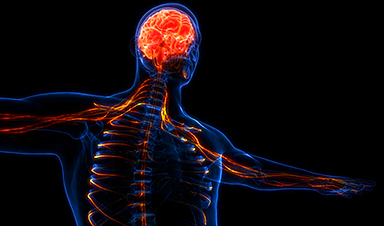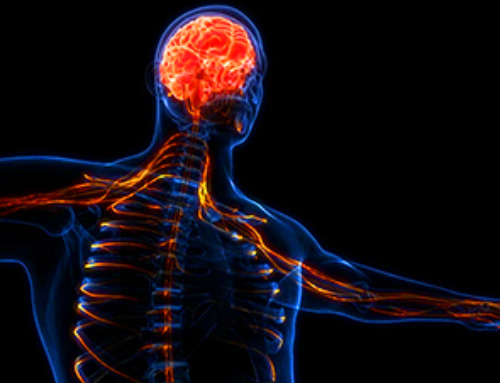- Since the early days of computer science, scientists have been exploring the idea of using DNA to store data.
- MIT has developed an amber-like polymer that can keep DNA intact and preserve it for a long time.
DNA, or deoxyribonucleic acid, is the molecule of life. While there are other essential molecules for life as we know it, DNA holds a special significance because it contains the instructions that cells use to produce proteins or RNA (ribonucleic acid) molecules. DNA is also responsible for genetic inheritance. However, this is far from everything DNA can be used for.
Since the early days of computing, scientists have been intrigued by the idea of using DNA to encode and store information, similar to how it functions naturally within living organisms. However, they’ve encountered challenges in manipulating DNA and preserving it over time without degradation, making it difficult to recover stored information in perfect condition.
Chemist James Banal, Jeremiah Johnson, and other scientists at the Massachusetts Institute of Technology argue that DNA is the future of data storage. They also believe that DNA’s density is so high that it’d be possible to store all the information currently contained in all the computers and servers worldwide in a coffee cup if it were filled with DNA molecules. Because of the work of these scientists, we’re now closer than ever to achieving this goal.
Michael Crichton Was Right
In Michael Crichton’s science fiction novel Jurassic Park, the premise is that dinosaur DNA can remain in good condition for millions of years inside an amber crystal. The MIT researchers have developed a polymer that can preserve DNA in a manner similar to the amber in Crichton’s novel, bringing this idea closer to reality.
In an article published in the Journal of the American Chemical Society, the authors discuss their “T-REX” (named after the popular dinosaur, also seen in Jurassic Park) method, which enables DNA to be preserved intact for extended periods, potentially serving as a storage method for massive amounts of information or even the entire human genome.
Unlike current preservation methods that require low temperatures and high energy usage, the polymer developed by MIT allows DNA molecules to be preserved at room temperature while protecting them from heat and water to prevent degradation. To demonstrate how their innovation works, the researchers encoded the main theme of the Jurassic Park movie soundtrack and a complete human genome into DNA within their polymer, successfully recovering it without damage.
“Freezing DNA is the number one way to preserve it, but it’s very expensive, and it’s not scalable… I think our new preservation method is going to be a technology that may drive the future of storing digital information on DNA,” Banal told MIT News.
While this technology holds promise, it’s still in the early stages of development, and many innovations fail to progress beyond the lab and stablish within the industry. However, the potential of this “T-REX” technology could revolutionize storage systems in the future and one day possibly replacing solid-state drives in computers.
News
New study suggests a way to rejuvenate the immune system
Stimulating the liver to produce some of the signals of the thymus can reverse age-related declines in T-cell populations and enhance response to vaccination. As people age, their immune system function declines. T cell [...]
Nerve Damage Can Disrupt Immunity Across the Entire Body
A single nerve injury can quietly reshape the immune system across the entire body. Preclinical research from McGill University suggests that nerve injuries may lead to long-lasting changes in the immune system, and these [...]
Fake Science Is Growing Faster Than Legitimate Research, New Study Warns
New research reveals organized networks linking paper mills, intermediaries, and compromised academic journals Organized scientific fraud is becoming increasingly common, ranging from fabricated research to the buying and selling of authorship and citations, according [...]
Scientists Unlock a New Way to Hear the Brain’s Hidden Language
Scientists can finally hear the brain’s quietest messages—unlocking the hidden code behind how neurons think, decide, and remember. Scientists have created a new protein that can capture the incoming chemical signals received by brain [...]
Does being infected or vaccinated first influence COVID-19 immunity?
A new study analyzing the immune response to COVID-19 in a Catalan cohort of health workers sheds light on an important question: does it matter whether a person was first infected or first vaccinated? [...]
We May Never Know if AI Is Conscious, Says Cambridge Philosopher
As claims about conscious AI grow louder, a Cambridge philosopher argues that we lack the evidence to know whether machines can truly be conscious, let alone morally significant. A philosopher at the University of [...]
AI Helped Scientists Stop a Virus With One Tiny Change
Using AI, researchers identified one tiny molecular interaction that viruses need to infect cells. Disrupting it stopped the virus before infection could begin. Washington State University scientists have uncovered a method to interfere with a key [...]
Deadly Hospital Fungus May Finally Have a Weakness
A deadly, drug-resistant hospital fungus may finally have a weakness—and scientists think they’ve found it. Researchers have identified a genetic process that could open the door to new treatments for a dangerous fungal infection [...]
Fever-Proof Bird Flu Variant Could Fuel the Next Pandemic
Bird flu viruses present a significant risk to humans because they can continue replicating at temperatures higher than a typical fever. Fever is one of the body’s main tools for slowing or stopping viral [...]
What could the future of nanoscience look like?
Society has a lot to thank for nanoscience. From improved health monitoring to reducing the size of electronics, scientists’ ability to delve deeper and better understand chemistry at the nanoscale has opened up numerous [...]
Scientists Melt Cancer’s Hidden “Power Hubs” and Stop Tumor Growth
Researchers discovered that in a rare kidney cancer, RNA builds droplet-like hubs that act as growth control centers inside tumor cells. By engineering a molecular switch to dissolve these hubs, they were able to halt cancer [...]
Platelet-inspired nanoparticles could improve treatment of inflammatory diseases
Scientists have developed platelet-inspired nanoparticles that deliver anti-inflammatory drugs directly to brain-computer interface implants, doubling their effectiveness. Scientists have found a way to improve the performance of brain-computer interface (BCI) electrodes by delivering anti-inflammatory drugs directly [...]
After 150 years, a new chapter in cancer therapy is finally beginning
For decades, researchers have been looking for ways to destroy cancer cells in a targeted manner without further weakening the body. But for many patients whose immune system is severely impaired by chemotherapy or radiation, [...]
Older chemical libraries show promise for fighting resistant strains of COVID-19 virus
SARS‑CoV‑2, the virus that causes COVID-19, continues to mutate, with some newer strains becoming less responsive to current antiviral treatments like Paxlovid. Now, University of California San Diego scientists and an international team of [...]
Lower doses of immunotherapy for skin cancer give better results, study suggests
According to a new study, lower doses of approved immunotherapy for malignant melanoma can give better results against tumors, while reducing side effects. This is reported by researchers at Karolinska Institutet in the Journal of the National [...]
Researchers highlight five pathways through which microplastics can harm the brain
Microplastics could be fueling neurodegenerative diseases like Alzheimer's and Parkinson's, with a new study highlighting five ways microplastics can trigger inflammation and damage in the brain. More than 57 million people live with dementia, [...]





















